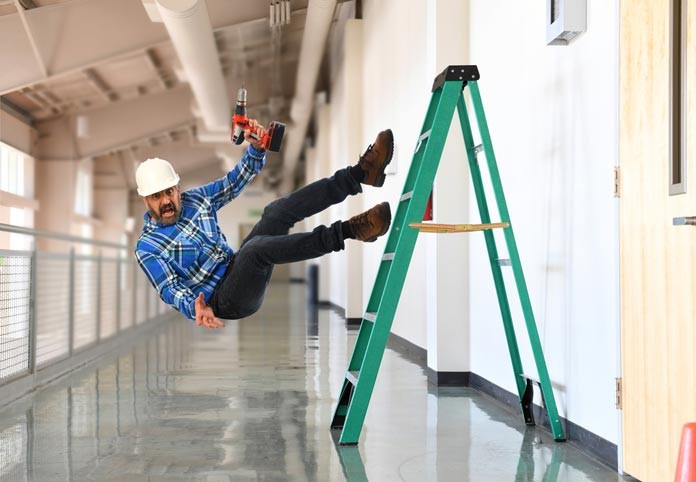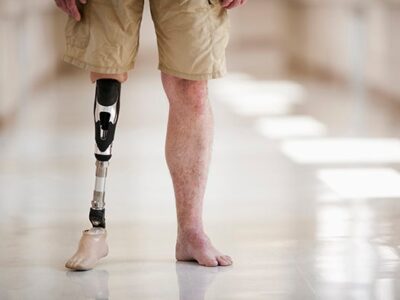Construction work can carry dangers with it. As we discussed in a prior post, construction sees a particularly high level of workplace fatalities. A recent Center for Construction Research and Training (CPWR) report indicates that, in recent years, one type of fatal construction accident has especially been on the rise: fatal falls.
Source
Safety+Health, “‘These are real people behind the numbers’: Fatal falls in construction on the rise,” May 10, 2017
The Data Behind the Risks: A Closer Look at Fatal Falls
According to the report, there was a 36 percent increase in construction worker fatalities involving falls between 2011 and 2015. In comparison, construction industry deaths as a whole went up 26 percent over this same period.
A construction worker doesn’t need to fall from staggeringly high heights to be at risk of suffering fatal injuries. According to the report, falls from 20 feet up or less made up over half (55 percent) of fatal falls. So, whatever height they have their workers work at, it can be critical for construction companies to give fall prevention proper attention.
Learn more about how Hussain & Gutierrez can help injured construction workers.
What Equipment Can Prevent Fatal Falls?
Proper fall protection equipment is key to saving lives. Employers are required by OSHA (29 CFR 1926.501) and Cal/OSHA Title 8, Section 1670 to provide and maintain the following:
- Guardrails and toe boards
- Personal Fall Arrest Systems (PFAS), including:
- Full-body harnesses
- Shock-absorbing lanyards
- Self-retracting lifelines (SRLs)
- Anchorage points rated for 5,000 pounds
- Scaffold and ladder safety systems
- Rescue and emergency plans
Failure to implement these protections can lead to severe penalties and increase the risk of fatalities.
Why Are Fatal Falls Increasing Faster Than Other Construction Accidents?
Several factors contribute to the rising trend of fatal falls:
- Lack of Adequate Fall Protection Systems: Missing or faulty equipment such as harnesses, lanyards, or anchor points.
- Inadequate Safety Training: Workers may not know how to use PFAS correctly or recognize hazards like unprotected edges.
- High-Risk Tasks: Roofing, scaffolding, and ladder work remain among the most dangerous activities.
- Language Barriers and Workforce Demographics: Many construction workers are immigrants or non-English speakers, leading to communication gaps during training.
- Complacency and Production Pressure: Tight deadlines can result in safety shortcuts and overlooked hazards.
- Inconsistent Safety Audits: Failure to conduct regular site inspections and address violations.
The Human and Economic Impact of Falls
While not all falls are fatal, many result in life-altering injuries such as:
- Traumatic brain injuries (TBI)
- Spinal cord injuries and paralysis
- Fractures, broken bones, and amputations
- Long-term disability requiring rehabilitation
According to the National Safety Council, the average cost of a workplace fall injury in the U.S. can exceed $100,000 when factoring in medical bills, lost wages, and productivity losses.
Beyond the numbers, each fall represents a family torn apart by stress, financial hardship, and emotional trauma. Families may face long recovery periods, lost income, and the struggle to access resources like mental health care and support services.
Workers’ Compensation, Death Benefits, and Legal Options
Whether or not the injuries end up being fatal, when a California construction worker is hurt in a workplace fall, workers’ compensation benefits play a critical role:
- Medical coverage for hospital bills, surgeries, and medications
- Temporary and permanent disability payments for lost wages
- Death benefits for surviving families in the case of fatal falls
Additionally, families may pursue wrongful death lawsuits or third-party claims if a general contractor, equipment manufacturer, or property owner contributed to the unsafe conditions.
Contact Hussain & Gutierrez for legal support on workers’ compensation and wrongful death claims.
Employer Responsibilities Under OSHA & Cal/OSHA
Employers are legally required to:
- Provide and maintain fall protection systems in compliance with OSHA 1926.501 and Cal/OSHA 1670.
- Conduct safety training in a language the worker understands.
- Perform regular hazard assessments and site inspections.
- Report serious injuries to Cal/OSHA.
Failure to comply can result in citations, fines, and legal liability. For example, in California, Cal/OSHA can issue penalties up to $25,000 per serious violation.
FAQs: Addressing Common Questions About Construction Falls
What are OSHA’s fall protection requirements for construction sites?
OSHA mandates fall protection for any work performed at heights of 6 feet or more. This includes guardrails, safety nets, and personal fall arrest systems.
What benefits can families receive after a fatal fall in California?
Eligible family members may receive workers’ compensation death benefits. In some cases, a wrongful death claim may be pursued against negligent third parties.
What types of injuries can result from a construction site fall?
Common injuries include brain trauma, spinal cord damage, fractures, and amputations, often requiring long-term care and rehabilitation.
Can workers file a lawsuit in addition to a workers’ comp claim?
Yes. In cases of gross negligence, defective equipment, or third-party involvement, workers and families may file additional legal claims.
How can a workers’ comp attorney help after a construction fall?
An attorney helps injured workers and families:
- File claims and appeals
- Maximize compensation
- Handle communication with insurers
- Navigate complex legal processes
Find answers to more legal FAQs about construction site injuries.
Don’t Let a Fall Derail Your Life: Get the Legal Help You Deserve
If you or a loved one has suffered a fall on a construction site, don’t navigate the system alone. The attorneys at Hussain & Gutierrez are here to fight for your rights, secure your benefits, and hold negligent parties accountable.
Contact us today for a free consultation: Hussain & Gutierrez



